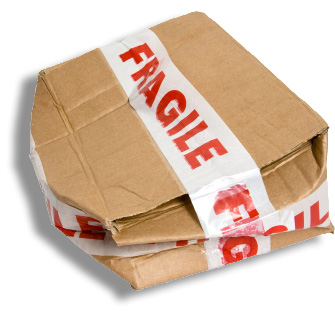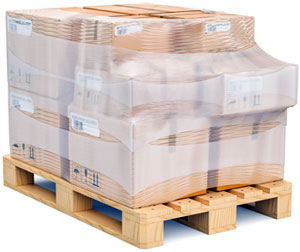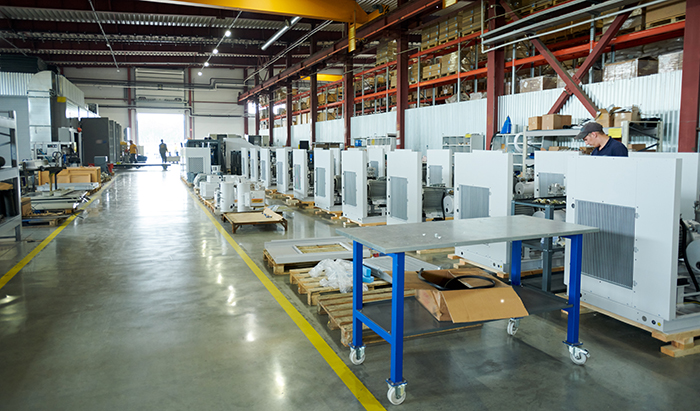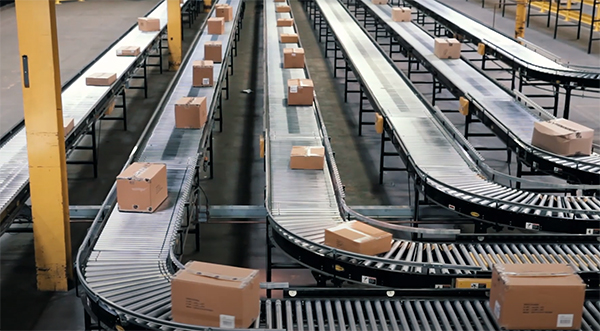9 Ways to Reduce Product Damage in Your Warehouse
Damaged product is a prime cause of loss in warehousing and manufacturing

In warehouse & manufacturing operations, things get broken. They break in a number of ways, and it’s expensive. You’ve probably seen product broken or damaged in amazing and improbable ways if you’ve been in this business for any length of time. We had a client once buy a bunch of mismatched, used industrial shelving (not from us), only to see it collapse and dump thousands of tiny aircraft components on the floor. It had to be swept up and discarded since it was all mixed up and visually impossible to sort.
Those are extraordinary examples, but everyday inventory damage that cost “only” a few hundred or thousand dollars can savage your bottom line.
Reducing Product Damage at Your Warehouse
1. Know your pallets
Check your pallets for broken or faulty planks or stringers, nails, or missing support blocks. Shoddy pallets can break with a load, and cause it, or pieces of it, to fall. They can also cause loading and unloading problems; for example, loose stringers can get hung up on the pallet racks, which can cause loads to fall.
Of course, the most pristine pallets don’t matter if the pallet is stacked wrong.
2. Load & wrap your pallets right

Cartons are at risk from the time you load them into pallets until the moment they’re depalletized at the receiving end – whether that’s one of your facilities, a customers’, or at some third party. The load must be stacked in a cubed, uniform, and stable manner. Pallet wrapping must be effective, whether executed by hand or by the use of an automated stretchwrapper.
3. Lighten up your operation
Upgraded facility lighting not only saves energy, it helps prevent product damage. One of the great advantages (and there are many) to upgrading your lighting system is that good lighting helps avert errors in packing, picking, putaway, and product handling. Your people can see what they’re doing better, but they also feel and perform better in clear, natural lighting.
4. Keep it clean

Above: a clean, unobstructed aisle in a manufacturing facility. Facility hygiene has a direct impact on product damage and other measures of quality.
Cluttered aisles encourage product damage. Forklifts that must navigate around obstructions are more likely to dump their load or hit pallet racking. Bright, clean, unobstructed aisles are a great way to aid productivity and safety, aside from protecting your inventory from damage.
Read more: 6 Ideas for a Cleaner Warehouse
5. Watch your weight
Don’t overload shelving or racks. Know the rated capacities and post them on your storage equipment. This should be obvious, but it’s one of those things that we always see in product damage incidents. Overloaded or mis-loaded racks and shelving cause collapses that can destroy inventory.
6. Install safety equipment
The prime reason to install rack safety netting is to prevent someone from being injured, but it has a nice side effect: it can help stop cartons from falling off palletized loads and breaking open. Other equipment, such as visibility mirrors function similarly – you install them to protect people, but they do a fine job protecting product as well.
Another good idea would be installing inexpensive pallet rack column protectors. They can absorb part of the impact of a forklift accident, and prevent a rack collapse – one of the more calamitous ways to destroy a lot of inventory very quickly.
Read more: Ways to Prevent Damage in Rack Aisles
7. Protect products on the conveyor

Utilize accumulation conveyors that hold product in place until signaled to release it. The drive pressure on the product can be adjusted to a minimum, or even eliminated altogether – which helps stop boxes from colliding with each other and causing potential damage. This is useful when a long line of cartons have to be accumulated without pressure so that they can be utilized in a process such as loading, sorting, taping, strapping, palletizing, or picking.
8. Protect your door frames & building structure
Low clearance warning bars and steel guarding not only protect the building, they also help reduce product damage during internal transport since pallets may fall apart or items can be knocked off.
9. Balance caution and speed
When people are frazzled, tired, and stiff from working at unnatural angles, they make mistakes and product gets dropped, crushed, or tossed carelessly in a way that can spill it, damage it, crimp it, or destroy it. Workstations should be set to the correct height. Pallet positioners can lighten and ease the task of dealing with loaded pallets. Using balancers, hoists, and lifts can help reduce physical stresses. Aside from preventing costly injuries, this can help prevent damage to products as they are being picked, packed, or processed.
Nothing can eliminate all product damage, but you can improve your odds
Order pickers, packers, or material handlers will drop totes or cartons or components. Forklifts will bump rack uprights. Machinery will malfunction. People will be off their game and haphazardly wrap or stack pallets. What you can do is eliminate larger categories of damage. You can create a situation where overall rates of product damage trend in the right direction and where your customers are minimally impacted.
Many of the ideas presented here may not apply to your particular operation, but some will. In general, you can make headway by monitoring product damage, gathering data, and attacking the most frequent causes. Knowing your damage rate and its root causes is the first line of defense.
Related articles:
- How to Evaluate a Warehouse Management System
- Improving (and proving) warehouse productivity
- Reducing Inventory Error Due to Order Picking
Tags: inventory control, damaged goods, warehousing, customer service, product damage
Scott Stone is Cisco-Eagle's Vice President of Marketing with 35 years of experience in material handling, warehousing and industrial operations. His work is published in multiple industry journals an websites on a variety of warehousing topics. He writes about automation, warehousing, safety, manufacturing and other areas of concern for industrial operations and those who operate them.



